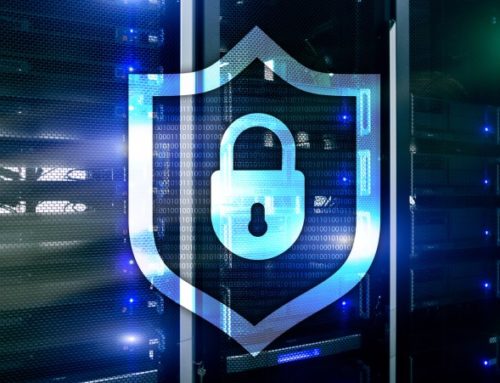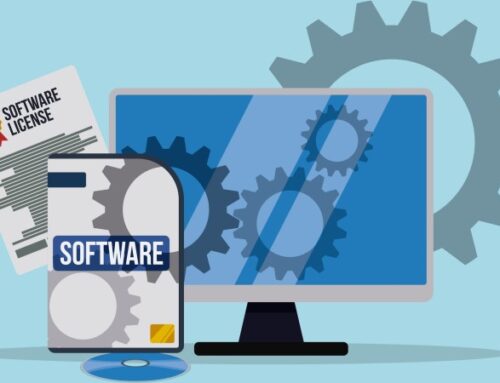What is end-to-end encryption?
End-to-end encryption is a method of encrypting and decrypting data. It is considered very secure. The method is also known as E2EE. This is the abbreviation of the English term end-to-end encryption. End-to-end encryption uses several cryptographic methods and keys. These include symmetric and asymmetric encryption. End-to-end encryption is the counterpart to point-to-point encryption.
The security of personal data and sensitive information is always an issue when users communicate online. In addition, data security plays a significant role for processing and storing documents or other files. Anyone who communicates with each other or processes data on the net is a potential target for attack by hackers at certain points. This danger looms in the unencrypted or poorly encoded exchange of files in cloud systems or in email communication. Without sufficient encryption, third parties gain unauthorized access to personal content. With end-to-end encryption, you protect data from theft and misuse. Often, however, the encoding is only incomplete and thus offers vulnerabilities during data transmission.
E2E encryption completely encodes data. This means that there is always a secure connection between two users on the internet or between devices and storage locations. However, the level of encryption depends on the internet provider or the provider of an online service. TeamDrive offers secure end-to-end encryption for all its services.
What is special about E2E encryption is that only the owners encode their content. Cloud providers or internet providers do not gain access to data or information. The content remains securely encrypted throughout the data transmission process. The secure exchange takes place from the sender to the receiver. With the appropriate key, only the recipient can decrypt the end-to-end encrypted encoding and view and read information.
How does E2E encryption work?
End-to-end encryption works in two different ways: symmetric or asymmetric. Symmetric encryption encodes data and offers the greatest possible security through AES-256 encryption. However, this also requires the AES-256 key itself to be transmitted securely and confidentially. To ensure this, TeamDrive uses asymmetric encryption with a public key procedure. When data or messages are exchanged, each user generates a key pair.
This pair consists of a secret key (private key) and the public key. The sender encrypts his message or file with the public key. The recipient decrypts the contents with the private key. The E2E encryption protocols contain a digital certificate that authenticates both end points of the communication. To ensure that data is safe from unauthorized access, the keys must only be accessible to authorized persons, but not to cloud providers or network operators.
Application of end-to-end encryption
The increasing popularity of messenger services like WhatsApp has brought more attention to end-to-end encryption. Unlike at the start of the service, WhatsApp now uses end-to-end encryption. It offers protection for sent photos, videos, locations or voice messages. The exchange from device to device takes place via a signal protocol. This is a cryptographic protocol for communication in messenger services.
End-to-end encryption offers high security and is therefore often used. Besides WhatsApp, other messenger services such as Telegram, Threema or the Facebook Messenger also use this encoding. Many companies also rely on secure E2E encryption for email encryption. However, not all end devices support this procedure. Another form of secure end-to-end encryption on the web is the HTTPS protocol. Many websites use this protocol to encrypt web servers and web browsers. It is also based on the principle of end-to-end encryption.
Encryption via two endpoints is one of the most secure methods for data exchange. Information is encoded from one end to the other with a continuous key.
Advantages of end-to-end encryption
End-to-end encryption improves the security of digital services. The following list shows the most common areas of application:
All services on the Internet with E2E encryption have the advantage that encrypted data is protected between sender and receiver. This has a positive effect on the following areas:
End-to-end encryption promotes data protection and prevents unauthorized access to personal data. Although this secure encryption is a plus for data protection, authorities try to gain access to these undiscovered virtual spaces. They want to access encrypted messages and data in order to detect criminal activities earlier. However, E2EE makes it impossible to monitor or eavesdrop on messages because the keys needed to decrypt them are missing. As a result, stored data in a TeamDrive cloud is so well protected that even the provider has no access to content. This also applies to the exchange of information including attachments such as photos or documents. Even the location cannot be identified due to the end-to-end encryption.
To further increase the IT security of data, the use of digital signatures makes sense. They increase the credibility of data. Signatures can be used to check whether someone has manipulated the content during transmission or whether the recipient is actually authorized to access it.
E2E encryption: security in data exchange
On the positive side, with E2E encryption, all data is encrypted and protected. However, some companies like Facebook store metadata. This is why WhatsApp’s end-to-end encryption is criticized. There is talk of bogus security because personal data is given greater significance through metadata. Companies can use it to view messages and identify who has exchanged encrypted content with whom and how often. In addition, gaps in security occur more frequently, giving hackers access to crack private keys. Users can prevent these unauthorized accesses by regularly updating their operating systems.
The biggest advantage of end-to-end encryption is that unauthorized persons cannot access personal data. If someone circumvents the encryption, only unidentifiable numbers and letters can be recognized. End-to-end encryption is therefore basically very secure, provided that the operating systems are always up to date.
TeamDrive offers automatic updates and ensures the highest IT security in the cloud with its complete end-to-end encryption. TeamDrive has been working on secure means for more than ten years and is constantly optimizing its encryption. It is now one of the most secure end-to-end methods on the cloud services market.




